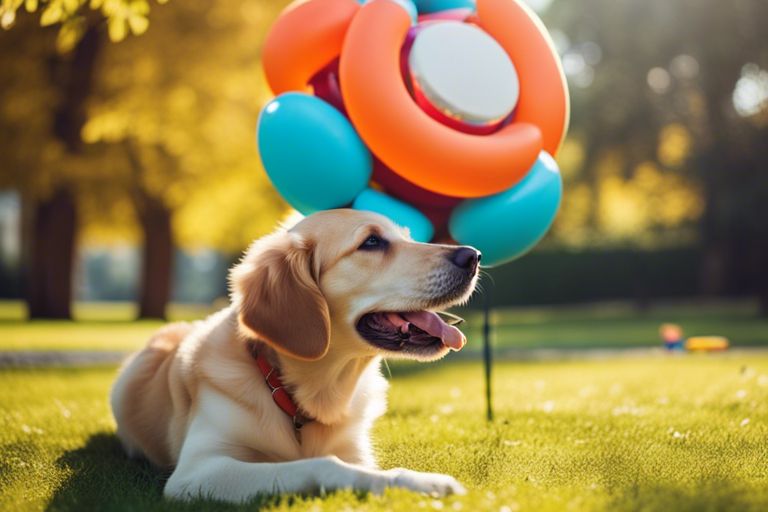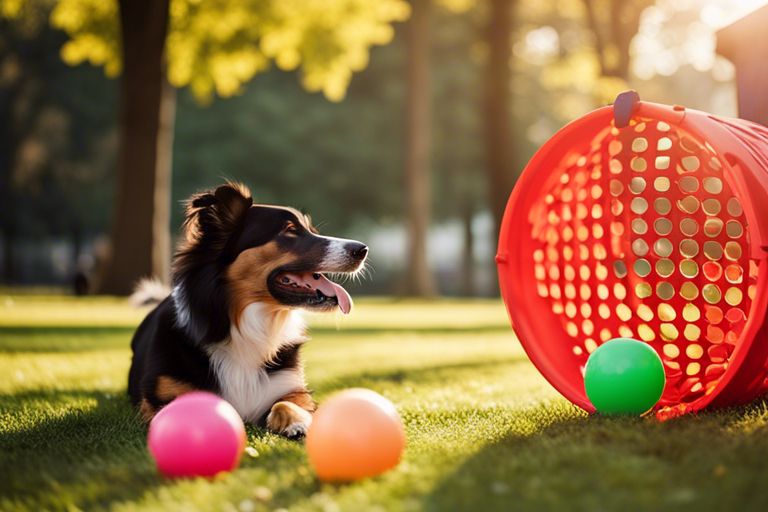Games play a crucial role in the training process of dogs, blending useful lessons with entertaining activities. In this blog post, we will explore seven interactive games that will not only make training sessions enjoyable for your furry companion but also enhance the effectiveness of the training. These games are designed to strengthen the bond between you and your dog, while teaching them imperative skills in a stimulating and engaging way.
Key Takeaways:
- Variety: Incorporating a variety of games can keep training sessions fun and engaging for your dog.
- Rewards: Using treats and positive reinforcement will motivate your dog to learn and perform better during training.
- Consistency: Consistent training routines and rules will help establish good behavior habits in your dog.
Why Make Training Fun?
Before stepping into the specific games that can make training your dog both fun and effective, it’s vital to understand why incorporating fun into the training process is so important. Training should not only be a way to teach your dog good behavior but also an opportunity to build a strong bond with your furry friend. Making training enjoyable for your dog will not only make them eager to learn but also strengthen the bond between you and your pet.
The Importance of Positive Reinforcement
Any training method that utilizes positive reinforcement is more likely to be successful in the long run. By rewarding your dog for good behavior, you are encouraging them to repeat those behaviors. Positive reinforcement creates a happy and rewarding experience for your dog during training, making them more motivated to learn and eager to please you.
Breaking the Boredom Barrier
Boredom
One of the main reasons why dogs may not respond well to training is because they are simply bored. Just like humans, dogs can get bored with repetitive tasks or lack of stimulation. Incorporating fun and engaging games into their training routine can help break this cycle of boredom and make training sessions more enjoyable for your dog.
Reinforcement
Game On! 7 Fun Training Games
Hide-and-Seek: A Scent-based Adventure
Some dogs love a good game of hide-and-seek, especially when treats are involved. This game is not only fun but also great for teaching your dog to use their sense of smell. Start by having your dog sit and stay while you find a hiding spot. Then, call your dog’s name and reward them with a treat when they find you. As your dog gets better at this game, you can increase the difficulty by hiding in more challenging spots. It’s a fantastic way to engage their natural instincts and keep them mentally stimulated.
Treat Dispenser Toys: A Challenge for the Mind
Any dog owner knows that most pups are food-motivated. Treat dispenser toys capitalize on this by providing mental stimulation and a tasty reward. These toys come in various shapes and sizes, requiring your dog to figure out how to get the treats out. Games like these can keep your dog entertained for hours while also promoting problem-solving skills. They are particularly useful for keeping your dog busy during times when you’re unable to give them your full attention.
Games with treat dispenser toys challenge your dog’s cognitive abilities and keep them mentally sharp. These toys can be a great addition to your training routine, as they encourage your dog to think and strategize while they play. Plus, the satisfaction of successfully retrieving a treat will keep your pup engaged and eager to continue learning.
Agility Training: Jumping into Fun
Mind and body are both engaged when your dog participates in agility training. Not only does it provide physical exercise, but it also sharpens their focus and concentration. Through activities like weaving through poles, jumping over hurdles, and navigating tunnels, your dog learns to follow commands and perfect their coordination. Agility training is a fantastic way to strengthen the bond between you and your furry friend while ensuring they stay active and healthy.
Training your dog in agility exercises not only provides a fun and interactive experience but also helps improve their overall physical and mental well-being. By incorporating various obstacles and challenges, you can keep your dog intellectually stimulated and physically fit. It’s a win-win situation for both you and your canine companion!
Building Trust and Bonding
“Follow the Leader”: A Game of Trust
Game: “Follow the Leader” is an excellent way to build trust and a strong bond with your dog. In this game, you are the leader, and your dog learns to trust and follow your cues. Begin by leading your dog around the house or yard, and be sure to reward them with treats and praise when they follow you correctly. This game not only strengthens your bond but also establishes you as the pack leader, which is crucial for effective training.
“Tug-of-War”: Strengthening the Bond
Trust: Playing “Tug-of-War” with your dog can be a fantastic way to strengthen your bond. Contrary to popular belief, this game does not encourage aggressive behavior in dogs. Instead, it can be a great outlet for their natural instincts. When playing tug-of-war, make sure to establish some ground rules, such as teaching your dog to release the toy on command. This game can build trust as your dog learns to engage in a fun activity with you while still following your commands.
Understanding: It’s important to understand that “Tug-of-War” should always be supervised, and if your dog shows any signs of aggression or unwillingness to let go of the toy, it’s best to stop the game immediately. By playing this game responsibly, you can create a stronger bond with your dog based on trust and mutual respect.
Basic Obedience Made Fun
“Simon Says” with a Twist
With a fun game of “Simon Says,” you can work on basic commands like sit, stay, and come in a playful way. Start by giving a command such as “Simon says, sit!” and reward your dog with a treat when they follow the instruction. Add a twist by occasionally giving a command without saying “Simon says.” This will reinforce listening skills and keep your dog engaged in the training session.
“Red Light, Green Light” for Impulse Control
One fun game to improve your dog’s impulse control is a canine version of “Red Light, Green Light.” Use treats to lure your dog forward (green light) and then suddenly stop and say “red light.” Reward your dog for stopping promptly. This game teaches your dog to pay attention to your cues and control their impulses, which is crucial for obedience training.
Another benefit of playing “Red Light, Green Light” is that it helps your dog learn self-control and patience, which are crucial skills for good behavior both at home and in public settings. Practicing impulse control through games makes training enjoyable for your dog while reinforcing positive behavior.

Advanced Training with Games
Many times, as we progress in training our dogs, we need to introduce more challenging and engaging activities to keep them motivated and mentally stimulated. Advanced training with games can be a great way to achieve this, making the learning process both fun and effective.
“Problem-Solving” with Interactive Toys “Problem-Solving” with Interactive Toys
The use of interactive toys in training can help stimulate your dog’s problem-solving abilities and keep them engaged. These toys often require the dog to figure out how to access treats or toys hidden inside through different mechanisms, such as puzzles or moving parts. By incorporating these toys into your training sessions, you can encourage your dog to think critically and use their intelligence to solve the puzzles, making the training more challenging and rewarding.
“Scent Work” for a Mental Challenge “Scent Work” for a Mental Challenge
Toys with hidden treats or scents can provide an excellent mental challenge for your dog. By hiding treats around the house or in a specific area outdoors and encouraging your dog to find them using their sense of smell, you can engage their natural hunting instincts and provide a mentally stimulating activity. This type of training can also help build your dog’s confidence and strengthen the bond between you.
With “Scent Work” games, you can tap into your dog’s amazing sense of smell and provide them with a fun and mentally stimulating activity. This type of training can be especially beneficial for dogs that love to use their nose and can help them stay focused and entertained.
Overcoming Common Challenges
Dealing with Distractions
To effectively train your dog, it’s important to address distractions. Start by practicing in a quiet, familiar environment before gradually increasing the level of distraction. Use high-value treats or toys to capture your dog’s attention and reward focus. Incorporate obedience commands into daily activities so your dog learns to listen regardless of distractions. Consistent training will help your dog stay engaged and focused in various environments.
Managing Hyperactivity
Any dog, regardless of breed, can exhibit hyperactive behavior that may hinder training sessions. To manage hyperactivity, ensure your dog receives enough physical exercise to release excess energy. Mental stimulation, such as puzzle toys and training games, can also help channel their energy in a positive way. Consistent daily training sessions focusing on impulse control and obedience can gradually improve your dog’s ability to stay calm and attentive.
Overcoming hyperactivity in your dog requires patience and consistency. By providing plenty of exercise, mental stimulation, and establishing routine training sessions, you can help your dog develop self-control and focus, making training sessions more effective.
Final Words
Drawing together on the importance of interactive games in dog training, it is evident that incorporating fun activities can significantly enhance the effectiveness of training sessions. By engaging your dog’s natural instincts and drive to play, you can create a bond that facilitates learning and reinforces positive behavior. With the variety of games available, you can tailor your training approach to suit your dog’s unique personality and preferences.
Building a strong foundation of trust, communication, and skills through these interactive games will not only make training sessions enjoyable but also more effective in shaping your dog’s behavior. Remember to be patient, consistent, and always prioritize your dog’s well-being and happiness throughout the training process. Incorporating these games into your routine will not only strengthen your relationship with your furry companion but also create a harmonious and well-behaved pet. So why wait? Start playing and training with your dog today!
FAQ
Q: What are some games I can play to make training my dog fun and effective?
A: There are several games you can play with your dog to make training fun and effective. Some popular options include hide and seek, fetch, tug of war, and scent games. These games not only provide mental stimulation for your dog but also help reinforce training commands in a fun way.
Q: How can playing games improve my dog’s training progress?
A: Playing games with your dog can improve training progress by making the learning process more enjoyable and engaging for your pet. Dogs are motivated by play and positive reinforcement, so incorporating games into training sessions can help them stay focused, retain information better, and make faster progress in learning new commands and behaviors.
Q: What tips can you provide for incorporating games into dog training?
A: When incorporating games into dog training, it’s important to keep sessions short and engaging to prevent boredom or frustration. Use high-value treats or toys as rewards during games to motivate your dog and reinforce good behavior. Additionally, be consistent with commands and cues to help your dog understand what is expected of them during playtime. Remember to always keep training sessions positive and fun for your furry friend.

